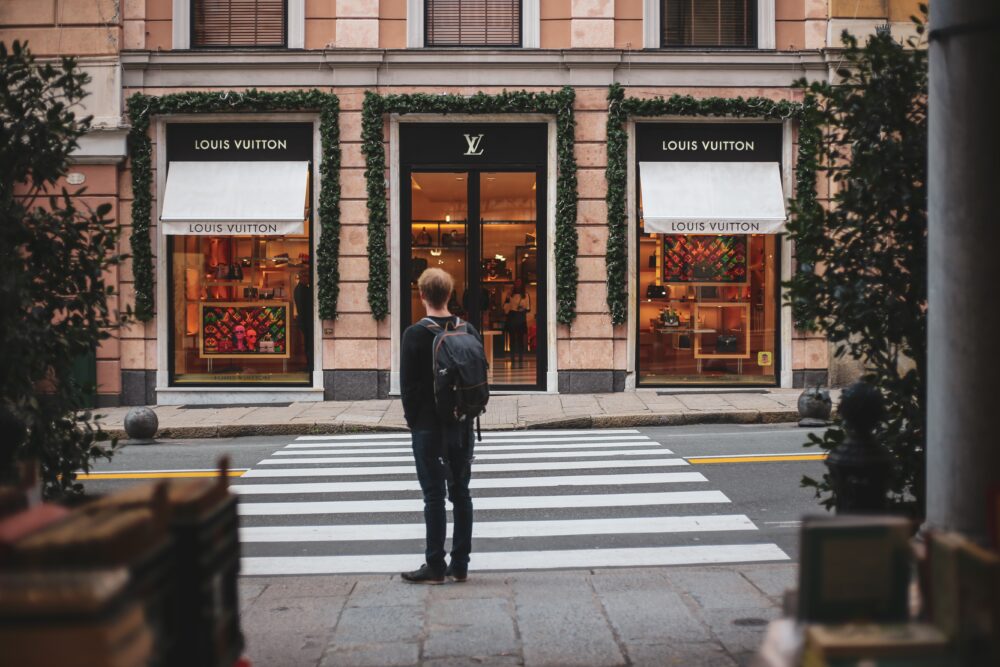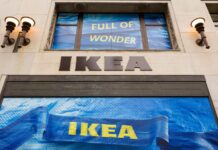When Boris referred to our current situation as ‘the biggest peacetime challenge’, it instantly made me wonder what brands did to ‘do their bit’ during World War II and other less peaceful economic times.
While tastes and tactics have changed since the 1940s and even the 2008 financial crisis, the overriding sentiment remains the same – brands must keep the wheels of industry turning.

This may be easier said than done when shops are shutting, pubs have closed on consumers; concerts have been cancelled, but these uncertain times should not preclude brands from planning ahead – thinking less about short-term sales and more about building their brand for long-term benefit.
Like the war, this virus will pass. Consumers will return to the high street. This is why it’s important to invest now in building a meaningful brand and love for it, which we are helping some of our clients do. The Body Shop is donating over 255,000 essential items to NHS staff; Domino’s has provided more than 100,000 pizzas to frontline workers; and Costa Coffee has given away over 250,000 free drinks.
In the UK, Marks & Spencer spent most of World War II manufacturing ration clothing for the British public. This act of kindness was widely admired, remembered and referenced as a key driver of M&S’ success throughout the 1960s and 70s.
In the US, the government established the War Advertising Council (WAC) during World War II for brands to market the idea of nationwide sacrifice to the public. Participation in WAC was voluntary, and companies didn’t receive direct compensation for it, but many enrolled as they saw the opportunity to be seen as the patriotic engine of the American economy.
US companies like General Tires ran ads to encourage readers to ‘buy more war bonds’ rather than tyres, which promoted the sense that sacrifice was important and that they were all in it together.
Today, mid-pandemic, we are seeing brands making similarly significant contributions towards solving the problem. LVMH has altered its production lines to mass manufacture hand sanitisers for hospitals. An act I’m sure – as with M&S and General Tires after World War II – consumers will look back on with warm feeling long after coronavirus.
In the UK, we’ve also seen the likes of BrewDog following this lead with the production of Brewgel Punk Sanitiser – a move that has not gone unnoticed by the media, on social and the in hearts of the public.
Throughout the comms industry, we’ve spent the last 2-3 years talking about the importance of brands having a social purpose and making more meaningful connections with consumers – I cannot think of a better time than now for us all to step up and do this in bigger and better ways.
This isn’t just a rallying cry from someone with a vested interest, the data – past and present – supports this suggestion.
When it comes to being a ‘Meaningful Brand’, at One Green Bean, an integrated earned media agency that’s part of the Havas Group, we determine these as brands that ‘define their strategy through the value they create’.
The findings from Havas’ Meaningful Brand Study 2019, a global study of 1,800 brands, in 31 countries, with 350,000 respondents, shows that brands who are meaningful outperform the stock market by 134% and see their share of wallet multiply by nine. These brands also lock-in greater returns on KPIs, like 24 points more for purchase intent and 39 points for advocacy.
Similar benefits were also enjoyed by strong, meaningful brands following the 2008 financial crisis.
BrandZ Global, the largest global brand equity platform, backed by Kantar Millward Brown, found that strong, meaningful brands recovered nine times faster following that economic meltdown.
But during the unusual and uncertain economic downturn we face now, is it really the time for brands to be building more meaning and love, particularly when there’s a quagmire of others looking to do the same? Isn’t it better to panic and pause activity and budgets until there’s more certainty, or even until it’s all blown over? Absolutely not the latter two options, no.
To name two of the post-recession-recovery-reports doing the rounds, findings from Millward Brown and Data2Decisions conclude that if brands reduce their spend during recessions, they often come out the other end weaker.
A more recent study by WARC: ‘How to win during and after a recession’, shows companies that cut investment by 50% in a year of crisis, can take up to two years to recover the share of market they lost. On the other side of the coin, WARC finds that brands that increase exposure in times of crisis can win up to three times more share of market in the first two years of recovery.

This data would suggest not to slash budgets, but to shift them. So where should retailers look?
GlobalWebIndex (GWI), a leading consumer-data platform, offer two (among many) key insights into the impact of the current pandemic on the global consumer landscape.
Firstly, that the outbreak is bringing back the ‘social’ aspects of social media. 39% of UK consumers are reading more news stories on social – this is the primary motivator to use social across markets, gender, and income. 80% of UK consumers also say they’re consuming more content – broadcast TV, online videos, and TV streaming take the top spots for increased media consumption.
Secondly, that coronavirus dominates consumer demand for news coverage, but many are seeking escapism. Around a third of UK consumers want to see more topics unrelated to the coronavirus, showing the importance of bringing in a sense of escapism or normality as the outbreak consumes every aspect of our daily lives.
There are many other relevant and insightful findings out there, including ‘peaks of social and mobile are now all day long’ (Platform Analytics, March 2020) and that audiences are ‘seeking experiences beyond our four walls’ (Adobe Omniture).
So, once brands have found their meaning and shifted budgets in the short-to-medium-term, what next?
If the learnings from those countries further ahead of us, like China, are anything to go by, then there are better times ahead to plan for.
Kantar, a leading data, insights and consulting company, found that once the virus had passed in China, there was huge potential for almost all categories and sectors to rebound. 82% of Kantar’s survey respondents in China, claim they will resume OOH dining and gatherings; 78% will resume travel; and 77% will resume OOH entertainment. The Chinese consumer pretty much plans to increase its spending across the board from food and beverage through to fashion and accessories.
The findings would suggest that being prepared to ride the wave of what we might ironically refer to as the ‘back to school period’ (being in late summer and all), would be a prudent thing to do.
While it’s tempting to panic in these uncertain times, it’s important to use the extra thinking we have while working from home to take inspiration from those who lived during far tougher times, to ‘do our bit’ in the war against coronavirus.
Let’s not panic but pause; find meaning; shift not slash budgets; and prepare for better, more prosperous times ahead. While now is the time for people to socially distance themselves, it is not the time for brands to self-isolate.
My starter for ten – how brands can find meaning from tougher times:
- Social listening while distancing: analyse social conversation and trends to make sure your communications and actions are not tone deaf
- Live, longer and prosper: increase frequency of online content and experiment with both longer and live forms
- Bring the outdoors in: consider shifting from OOH media, experiential and sponsorship activities to digital media, social and PR
- Look up from your laptop: seek external counsel on strategic plans and creative campaigns before going live
- Voice of reason over share of voice: Err on the side of the public and the frontline, not short-term profits
- Friends close, competitors closer: check their activity regularly and be open to collaborations
- When you can’t make, curate: there is so much content out there, package up what you think your audience will find most interesting and relevant
- Fail to prepare is preparing to fail: think ahead to stores opening; travel bans lifting; going back to work etc.
- Turn your creative up to 11: as lockdown continues, creativity will be rewarded and required to standout. Be brand-aligned but audacious
- Keep calm, carry on: history shows that brands that keep going – in strong, meaningful ways – emerge from economic shocks ahead of their competitors
James Thomlinson, Managing Director, One Green Bean
















